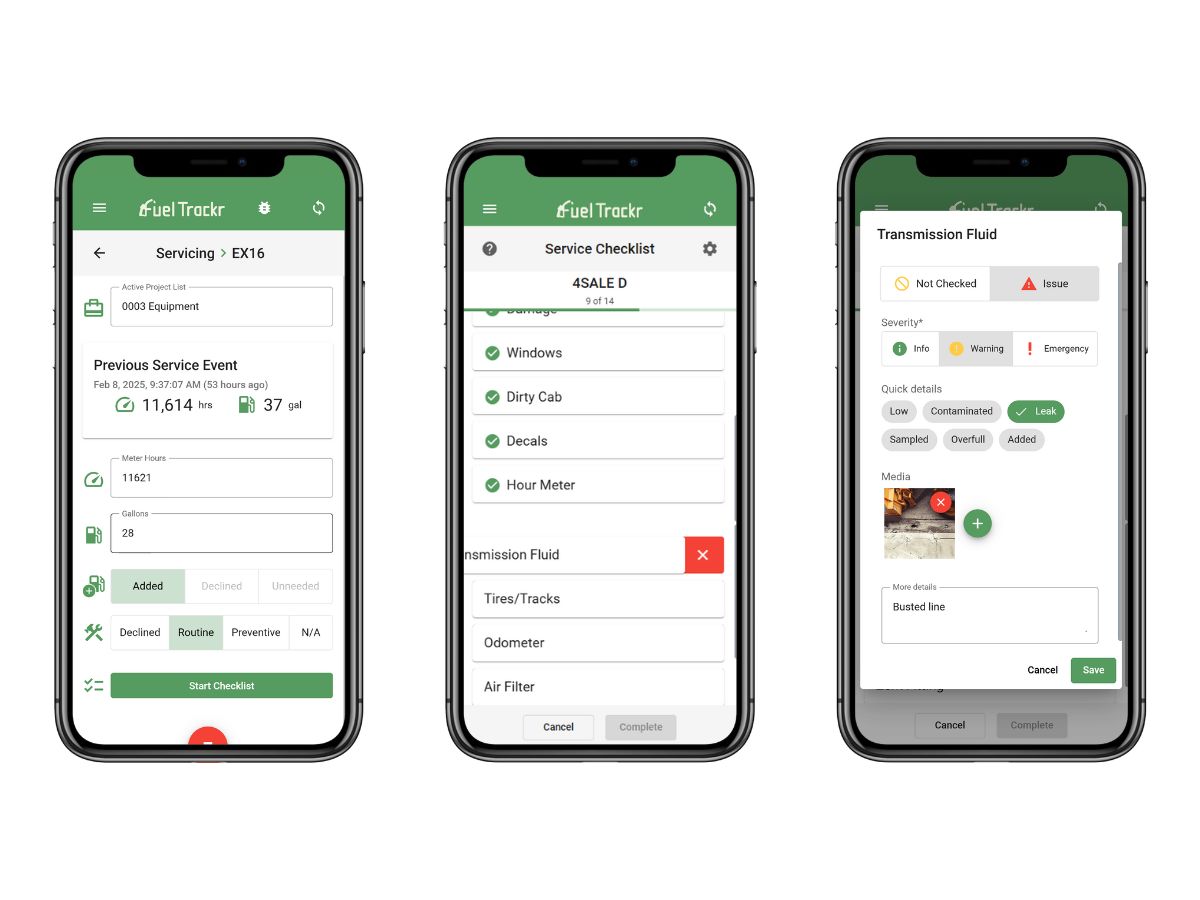In the construction industry, managing a fleet efficiently can mean the difference between profit and loss. Fuel costs, maintenance, and asset utilization all play a crucial role in determining overall efficiency. That’s where FuelTrackr comes in—helping construction companies optimize their fleet, track their fuel, and improve capital planning.
If you’re looking to reduce costs and increase efficiency, here are five easy steps to implement fleet optimization with FuelTrackr.
1. Collect and Centralize Fleet Data
At first, gathering and organizing fleet data might seem like a daunting task. Many construction companies rely on outdated spreadsheets or scattered logs, making it feel overwhelming to track fuel usage, maintenance, and equipment deployment.
But with FuelTrackr, this process is simple and automated. Our system is designed from the ground up to make it easy for fuel truck drivers to capture meter readings, track gallons, and perform quick inspections of critical components.
Reconciliation of fuel purchases with fuel distribution is managed from the office and can be completed in as little as 1 hour a month.
Invoices can be automatically pulled in from your fuel supplier(s) via APIs, or quickly entered in with our easy-to-use interface.
- Fuel truck drivers can be fully trained in under an hour.
- Fuel manager and reconciliation training takes between 1 and 2 hours.
With everything in one place, you get real-time visibility into your fleet. What once seemed complicated becomes an easy, streamlined process—allowing you to focus on running your projects efficiently.
2. Analyze Fuel Usage and Identify Waste
Fuel is one of the biggest expenses in fleet management. By using FuelTrackr’s real-time fuel tracking, you can:
✅ Identify inefficient vehicles and equipment
✅ Detect fuel theft or unauthorized usage
✅ Reduce idling time and unnecessary refueling stops
With clear insights, you can cut fuel costs, feel confident you’re getting the fuel you paid for and ensure it’s going into authorized equipment on your jobs.

3. Implement Positive Equipment Inspections
Unplanned equipment breakdowns can delay projects and increase costs. FuelTrackr helps you implement a proactive equipment strategy by:
🔧 Tracking usage hours or mileage
🔧 Sending automated messages to your fleet team based on real-time reports from the field
🔧 Identify trends for equipment issues to prevent costly breakdowns before they happen
This ensures higher uptime and longer asset life, reducing unexpected repair expenses.
4. Optimize Equipment Utilization
Construction fleets often have underutilized assets that add unnecessary costs. With FuelTrackr’s consumption reports, you can:
📊 Track how often equipment is being used
📊 Identify surplus or underutilized machinery
📊 Make better capital planning decisions
By optimizing equipment deployment, companies can reduce rental costs and improve ROI on owned assets.
.png)
5. Use Data to Plan for Future Fleet Investments
Instead of relying on guesswork, FuelTrackr provides data-driven insights to help you plan future fleet investments. You’ll be able to:
📈 Identify which equipment needs replacement
📈 Plan for new acquisitions based on actual usage
📈 Forecast fuel and maintenance costs
This strategic approach helps construction companies maximize their budget and improve financial planning.
Start Optimizing Your Fleet Today
Fleet optimization doesn’t have to be complicated. By following these five simple steps and leveraging FuelTrackr, you can cut costs, increase efficiency, and improve capital planning.
Ready to take control of your fleet? Get started with FuelTrackr today!



